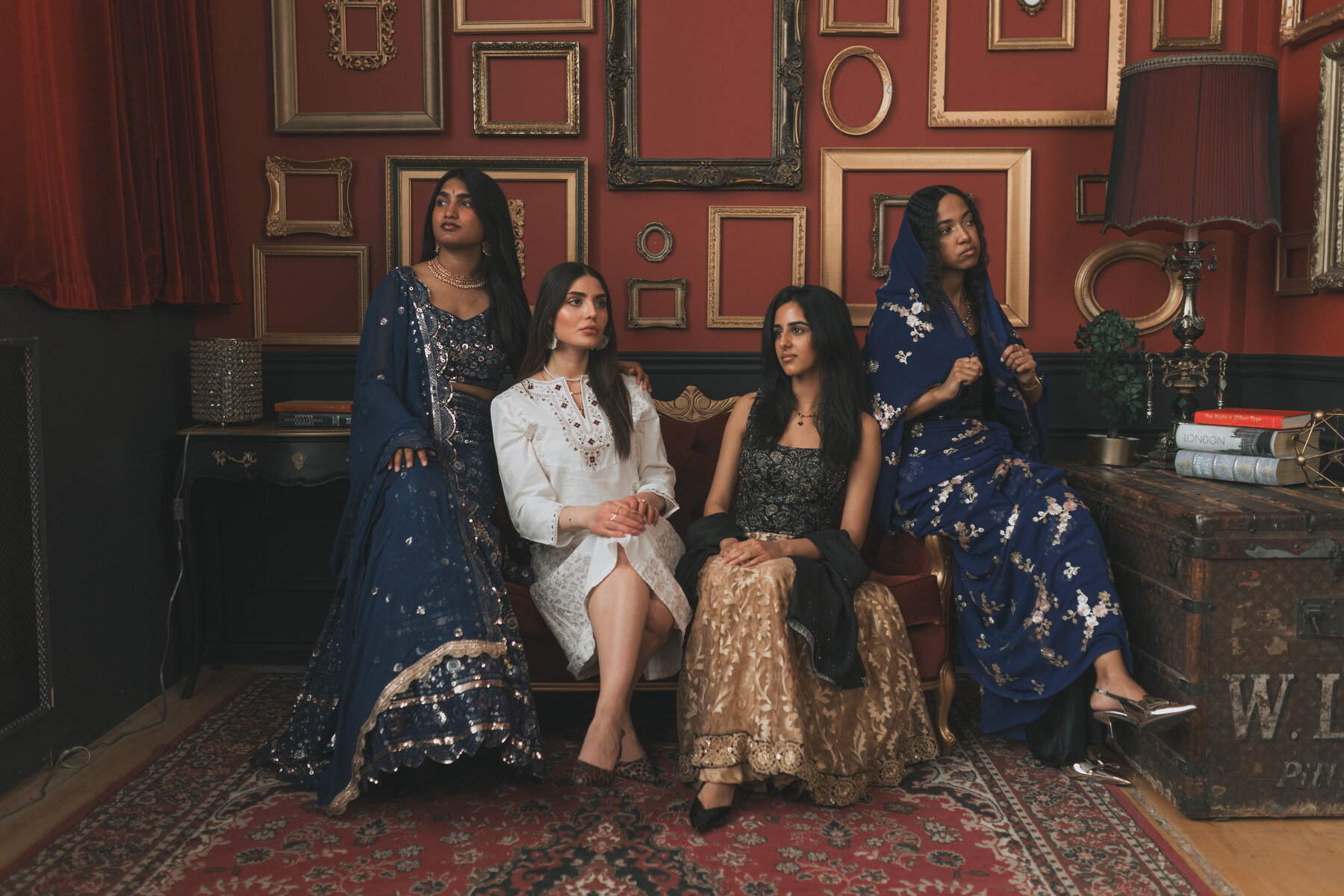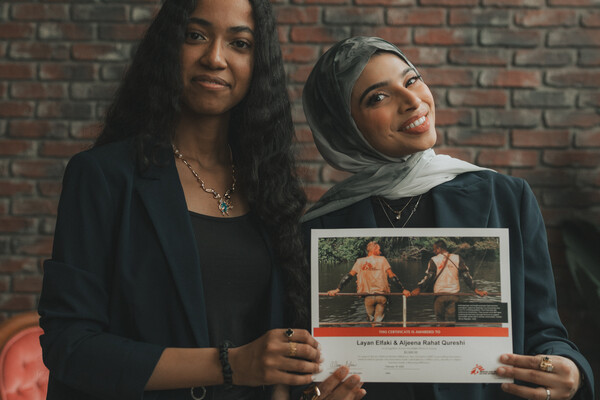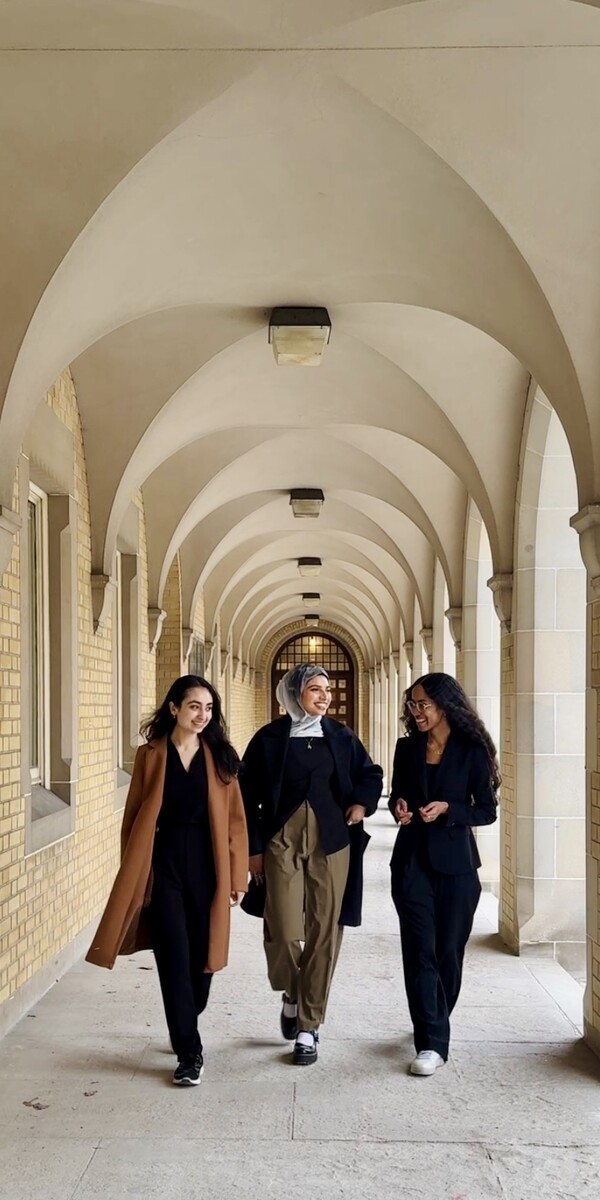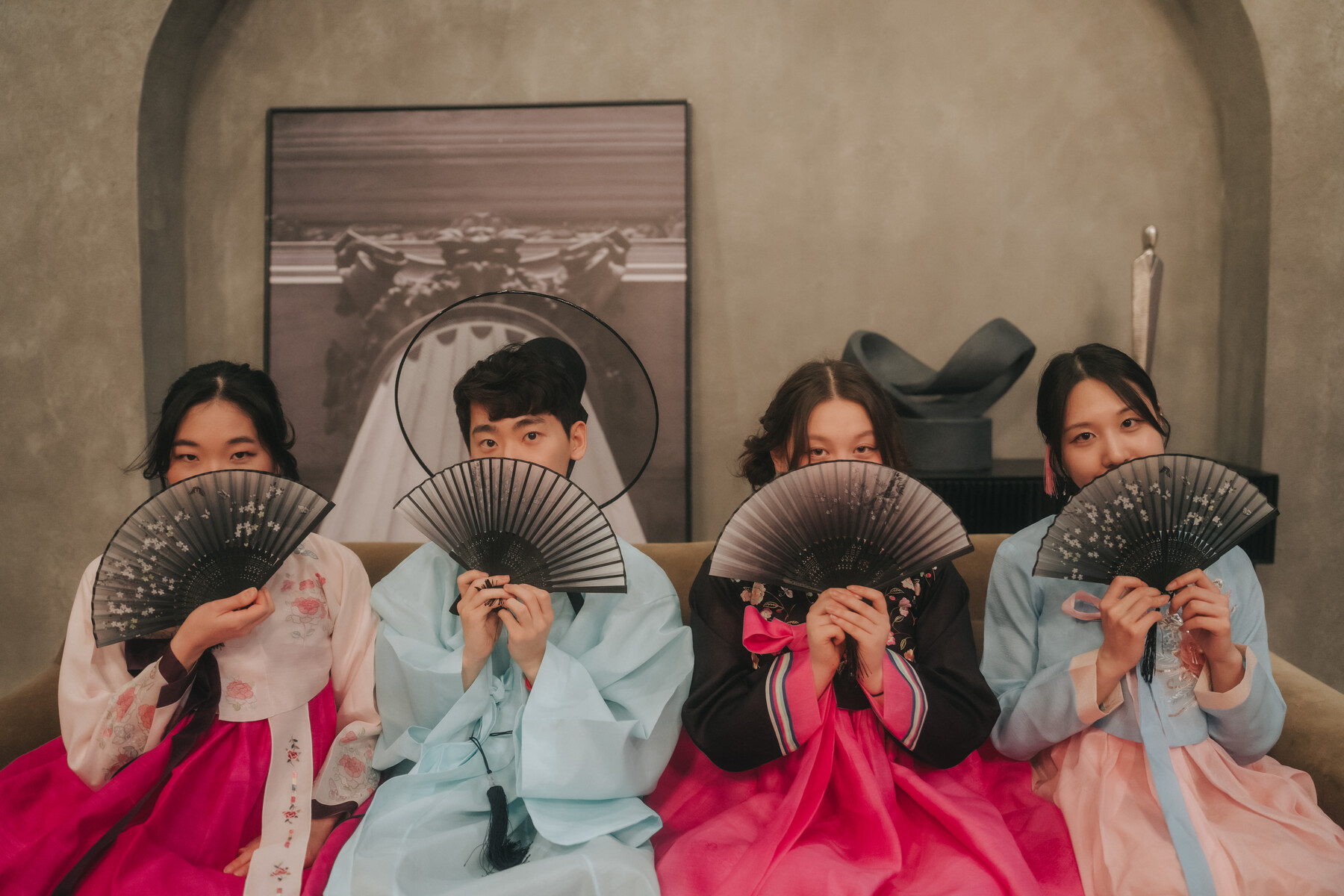Main Second Level Navigation
Breadcrumbs
- Home
- News & Events
- Recent News
- Threads: a celebration of culture and fashion in medical education
Threads: a celebration of culture and fashion in medical education


Threads Cultural Fashion Show is a student-led initiative at the Temerty Faculty of Medicine that brings the U of T community together to celebrate cultural diversity through fashion, storytelling, and community. This year’s show will take place on April 27, 2025.
Started by MD Program students Aljeena Rahat Qureshi and Layan Elfaki, the project gives students a space to showcase their cultural attire, share their backgrounds, and learn from each other. More than just a fashion show, Threads is about building connections, fostering inclusivity, and encouraging cultural awareness in medical training. Ticket sales raise funds for Doctors Without Borders.
Aljeena Rahat Qureshi, Layan Elfaki and Inaya Yousaf — organizers of Threads — spoke about the conception of this initiative, what made them want to get involved, and what they hope people take away from this event.
Tell me a little bit about Threads. How did this project start, and what is it about?
Aljeena: Threads began as a conversation between myself and Layan during our first year of medical school. We were learning about communication techniques in clinical skills and the importance of cultural sensitivity. Both of us come from very diverse backgrounds — I've lived in three different countries — and we found ourselves talking about culture, fashion, and how they intersect with every aspect of our lives. At the same time, we noticed there wasn’t a dedicated space for our incredibly diverse cohort to express their identities and learn from each other outside the classroom. That sparked our idea to create Threads: a platform where students could showcase cultural attire, celebrate their heritage, and foster a sense of community within the medical faculty.
Layan: Soon after our initial conversation, we laid out the objectives we wanted to achieve and started recruiting executive team members. In hindsight, it was a no-brainer that we would co-found an initiative like Threads to address the gaps in our curriculum with regards to cultural sensitivity training.

What made each of you want to get involved with Threads, and what has the experience been like?
Aljeena: Coming from a family involved in the visual arts and one which is spread across the world, I’ve always been fascinated by how people express their culture. That global perspective, combined with my interest in medicine and health care, even led me to pursue a master’s in global health. So, when the opportunity arose to co-found Threads with Layan, it felt like a perfect fit.
As co-founders, we established relationships with faculty, artists, photographers, and local businesses, and also handled logistics like fundraising, grant applications, and setting up partnerships with shelters, studios, and fashion set designers. We provided the initial vision for the show and continue to oversee the various sub-teams — from marketing and creative direction to finance and outreach.
Layan: Co-leading and being part of Threads allows me to contribute to a few causes that I am passionate about; I’ve always been curious to learn about different cultures and ways of living. Being from and having lived in Sudan, Africa, I witnessed first-hand how big of a role culture plays in one’s understanding of medical illnesses but also the way in which one interacts with health-care institutions. Thus, I recognize the importance of cultural sensitivity and competence in providing effective care for patients from different backgrounds. Where lived experience falls short, cultural exposure throughout training can be a good substitute.
During my undergraduate and MSc degrees, I was extensively involved in equity, diversity and inclusion initiatives that uplift and aim to increase the representation of marginalized groups in STEM fields. My goal was to continue doing that during my medical training, and Threads was the perfect avenue to accomplish that although indirectly.
Inaya: Fashion and artistic expression have always been powerful ways to reconnect with my roots. As an immigrant from Pakistan, clothing is more than just fabric — it’s a tangible connection to my culture, woven into celebrations, family gatherings, and everyday life. Being Pakistani is an integral and foundational part of my identity. I find joy in creating spaces where people can embrace and showcase themselves through their heritage. Beyond my personal connection, U of T’s medical community is incredibly diverse, and Threads provides a platform to reflect that richness, and celebrate it through a memorable event!
Your first show happened last year. What lessons did you learn from that show, and what would you do differently this year?
Aljeena: It was an incredible success. We raised $3,000 for Doctors Without Borders, attracted about 125 attendees, and had 40 medical students participate as models. One of our biggest highlights was when a last-minute A/V issue arose. Our team rallied together to fix the problem, and one of our models did an impromptu encore to keep the audience entertained. The sense of community was amazing.
We also showcased food from around 12 different caterers, each representing a different culture, which turned the event into a true cultural exchange. Staff and residents came out in cultural garb, and it felt heartwarming to see everyone in a very different context from our day-to-day.
In terms of lessons learned, we realized many students wanted to participate but didn’t have access to cultural clothing. That’s why, this year, we’re collaborating with a local seamstress to help students access attire at a low cost. We’re also more prepared logistically, especially regarding A/V needs and venue set-up.
Layan: Altogether, we had 25-plus cultures represented through clothing, food, and music, which exceeded our expectations. Seeing my classmates in their cultural attire and bonding over these discussions created a level of comfortability that I had not yet experienced in medical school.
To support global health education, I worked with my team to put together an educational e-pamphlet that was shared with attendees at the show. The pamphlet contained written and visual narratives from our student body detailing anecdotes from their cultural practices and relevant healthcare system information.
We’re currently in the process of organizing our second annual show, scheduled for April 27 of 2025, to continue accomplishing our objectives and expand our outreach. For instance, we are establishing collaborations with EDI groups at McMaster and Waterloo University to create chapters at these medical schools. By expanding Threads to medical schools across Ontario, we are creating more opportunities for cultural exposure and exchange, which could only positively serve medical training and patient outcomes by extension.
To solidify the impact of Threads as an innovative approach in fostering cultural competence in medicine, we will be presenting the findings of our qualitative study at several scientific conferences including the 2025 Ontario Student Medical Education Research Conference and the Interdisciplinary Social Accountability Conference in Healthcare.
How has the experience been balancing medical studies and working on this show?
Aljeena: Balancing medical school and organizing Threads has been a challenge — especially last year, when it was just an idea we had to pitch to stakeholders and prove could work. We had to juggle a lot of new responsibilities at once, from designing the show to finding funding and managing the teams.
This year, we’ve expanded our sub-teams and assigned more focused roles, which has distributed the workload more evenly. It’s definitely more manageable now, and we’ve gotten better at time management and leveraging our team’s strengths.
Layan: It’s been challenging to balance the process of leading a team of 21 executives alongside my other extracurriculars, research, and academics. However, my dedication to the initiative is what drives me. Getting tasks done for Threads doesn’t feel like work because of our enjoyment for the project and the fact that it allows me to express my creativity.
Inaya: For me, it has been manageable because everyone in the team supports one another, listens to one another and is so understanding of the stress that can come with being in medical school. For me personally, our meetings are a fun reprieve; I love seeing everything come together as Layan and Aljeena’s vision become more and more tangible each week.
What else would you like people to know about this project?
Aljeena: Threads goes beyond fashion shows and cultural clothing; it’s fundamentally about creating a platform for celebration, learning, and exchange. By sharing our cultures and stories in an inclusive environment, we’re building deeper connections and understanding among future healthcare professionals. We hope that fostering this cultural sensitivity and curiosity during medical training will ultimately help us become more empathetic and well-rounded clinicians in the long run.
Inaya: This project will be a very memorable event; a fun celebration of rich cultures through beautiful clothes, food, music, and dance. But beyond that, this project celebrates a very visceral and beautiful thing. Specifically, our community is comprised of so many Threads woven together to form a rich and beautiful fabric that comprises the health-care community. Threads aims to educate through a celebration of this diversity.

News


